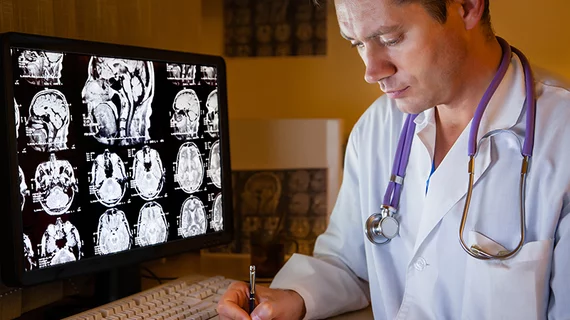Emergency docs heavily utilize secondary outside imaging reads, paying ‘dividends’ for patients
As specialties continue to strive for lower error rates, second opinion consultations have gained popularity, particularly in pathology. And while radiology has been slower to adopt a formal process, new research suggests emergency clinicians heavily utilize these extra eyes.
That is what emergency physicians at Yale School of Medicine said in a recent survey published June 10 in Clinical Imaging. About 80% of doctors at the level 1 trauma center requested secondary imaging reads from an outside facility either “always” or “most of the time,” and nearly 90% said these additional interpretations reduced imaging utilization.
Outside imaging interpretations are not without pitfalls, said Dipan Danda, MD, and colleagues with Yale’s Department of Radiology and Biomedical Imaging, but the benefits outweigh the risks, particularly for patients.
“The decreased utilization of diagnostic imaging equipment in the emergency setting due to availability of secondary interpretations can pay dividends for patients without outside imaging by allowing imaging to be expedited for patients who would have otherwise had to wait their turn for the equipment to become available, thereby increasing the throughput of these patients as well,” Danda et al. added in the study.
Researchers from the New Haven, Connecticut, institution surveyed 48 attending emergency physicians and 10 trauma surgeons between March and April 2018. In total, 27 individuals replied, which the authors noted was a limitation of the study.
They found that 92.3% of respondents felt their ability to commission a second interpretation improved patient care. Danda and colleagues said this may be related to a boost in confidence from additional reads, which have been shown to increase diagnostic accuracy by up to 90%.
Overutilization was also addressed, according to emergency doctors, with 88.5% claiming a reduction in imaging use following secondary interpretations. Having diagnostic findings—including additional consultations—documented in a patient’s electronic record allows clinicians to focus on the next step in patient care, rather than ordering additional exams for uncertainties.
A number of other studies have shown that these outside interpretations can help spot important findings and reduce errors. One such study, also performed by Yale Medicine researchers, found that an FDA-approved AI solution flagged 28 CT head scans with a brain bleed that were not spotted by human readers.
The authors did note some legitimate concerns regarding secondary outside interpretations. For one, conflicting primary and secondary reads can open up radiologists to liability issues.
Some also point to a potential increase in radiologists’ workloads.
“While secondary reads increase the workload of radiologists, they may be less time consuming than reading a study de novo, as the radiologist frequently has the benefit of a prior outside radiologist's findings and sometimes will have a better sense of the clinical concern, which may allow for a more focused review,” the group wrote.
The small sample size and single-institution setting are clear limitations of this research, the authors acknowledged. Future attempts should address this and also attempt to assess whether secondary reads directly contribute to improved patient outcomes.

